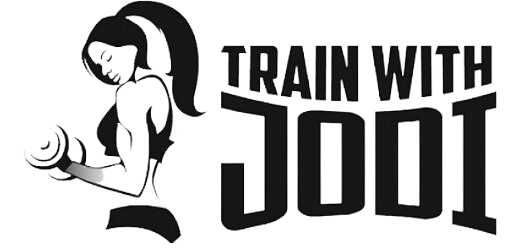Let’s face it; we’re all human. We all have our struggles; nobody is perfect, and sometimes we fall of the wagon.
Whether it’s the work meetings, school meetings, parent meetings, neighborhood meetings, HOA meetings, friends/relatives/social get-togethers,
etc… , life happens and sometimes we are not always prepared and/or we cave in.
No matter if you have fallen off the “healthy” wagon for just a short time or months or years, this 10-day reset will help strip your body of all its excess metabolic junk, force your body to use the proper uptake mechanism to burn and mobilize fat, and knock your body back into gear, priming it for its next accomplishment.
Now, don’t get me wrong, it probably won’t be easy. Your body may fight you. You may feel foggy and lethargic after a few days and want to quit…..but DON’T! This feeling (while your body is transitioning) only lasts for 2-3 days tops and THAT’S IT! After your 10 days, your body is back on track and you’re ready to become the best version of you possible!
The 411 on the Ten-Day Reset
Basically, all you need to do is stay under 30 grams of usable carbs per day (fiber doesn’t count). Do this for 10 days. On the night of your 10th day, you’ll eat carbs (high glycemic carbs like sweet potatoes, winter squashes, overripe bananas, sticky white rice, a high sugar dessert…NO WHOLE WHEAT, GRAINS, COMPLEX CARBS, OATS, ETC..). Then the next morning, workout! From here on out, you’ll do a carb night one night a week. For more information, you can check out some of my posts here, here, and here.
Focus on What You CAN Eat
I suggest following an ancestral type diet. Basically, this is a lifestyle that involves eating whole, real, natural food and avoiding highly processed, grain-‐based foods, sugar, and hydrogenated vegetable oils that only came into our diets most recently.
What to Eat:
- MEAT
- Grass-‐fed/pastured bison, beef, poultry, lamb, and pork. Grass-‐fed and pastured meats come from animals that are healthy and happy, and their meat has more minerals, vitamins, and better fatty acids.
- EGGS
- (especially the yolk) from pastured chickens and ducks
- VEGETABLES
- eat lots of produce like leafy greens, cruciferous vegetables, colorful plants, and other assorted vegetables
- FISH AND SEAFOOD
- wild-‐caught, fatty fish are best, like salmon.
- NATURAL OILS
- coconut, olive, avocado, palm, and butter/ghee or lard from grass-‐fed or pastured animals
- NUTS
- eat these minimally – seeds and nuts (soaked), particularly macadamia and walnut as they are highest in Omega 3
What NOT to Eat:
- PROCESSED OILS (PUFA –polyunsaturated fatty acids) HYDROGENATED VEGETABLE OILS (trans-fat)
- Cause inflammation, avoid all types of margarine, soybean oil, canola oil, “vegetable” oil, corn oil, and sunflower/ safflower oil. *Most processed foods have at least one of these types of oils.
- LEGUMES
- Legumes, like soy, peanuts, and beans like kidney beans, Romano beans, et, trigger inflammation and digestive upset.
- GLUCOSE (SUGAR)
- Processed carbs and sugar. Sugars added to foods have been linked to a lowered level of essential micronutrients and an increase in body weight.
- GRAINS: WHEAT, BARLEY, RYE, CORN
- These tend to be very high in processed carbohydrates. Grains also contain lectins and gluten. Lectins are toxins that a plant develops to protect itself. These lectins cause damage to the gastrointestinal tract and also pull vitamins from the intestines. Gluten can cause abdominal pain or discomfort, bloating, diarrhea, headaches, joint pain, mood disorders, and more. A large majority of people have none of these outward symptoms, yet their insides are riddled with inflammation, preventing absorption of valuable micronutrients. For “wheat flour” I substitute coconut flour, almond flour, and yucca flour for all my cooking and baking needs.
Always make sure you are high on fat, low-med on protein, and super ultra-low on carbs (under 30 grams of net carbs is a general guideline). Below is a pyramid for a general idea on percentage of calories you should consume. 
(Though definitely NOT necessary) For those of you who particularly love figuring out your macros to an exact science, here is a nifty calculation guide:
*ESTIMATING DAILY CALORIE EXPENDITURE*
Whether you’re trying to maintain your current bodyweight, gain muscle or lose fat, it is necessary to estimate daily calorie expenditure as a starting point for determining the calorie intake appropriate to your goals. The key words here are ESTIMATE and STARTING POINT. No formula or method of measurement is perfect. No matter how good something looks on paper, what ultimately matters is practical results. Whatever your initial estimate, you will need to keep records of calorie intake and goal-relevant measurements and adjust your intake accordingly.
Your body burns a number of calories every day just to sustain vital organ function – called basal metabolic rate (BMR) or basal energy expenditure (BEE).This can either be directly measured using indirect calorimetry or estimated using various formulas. Additional calories are burned during physical activity and during digestion, which is also referred to as the thermic effect of food (TEF). Total daily calorie expenditure can be estimated by multiplying BMR by an “activity factor”, which also takes TEF into account.
*ESTIMATING BASAL METABOLIC RATE*
•Standard: 370 + (9.82 x lean mass in lbs)
For example, for two 200 pound people – one with 10% body fat, one with 25% bodyfat – we get the following BMR estimates:
•200 lbs at 10% body fat with 180 pounds lean mass: 2138
•200 lbs at 25% body fat with 150 pounds of lean mass: 1843
*ESTIMATING CALORIES BURNED DUE TO ACTIVITY & FOOD*
After estimating your BMR you would need to determine the additional calories burned by activity and digestion. In Exercise Physiology: Energy, Nutrition and Human Performance, the authors provide several “activity factors” to multiply by your BMR to estimate your average daily calorie expenditure. These also account for TEF:
x 1.2 – Sedentary: Little or no physical activity.
x 1.375 – Lightly Active: Light exercise 1-3 days per week.
x 1.55 – Moderately Active: Moderate exercise 3-5 days per week.
x 1.725 – Very Active: Hard exercise 6-7 days per week.
x 1.9 – Extremely Active: Hard daily exercise and physical work
So, let’s say the two people above are moderately active.
The person with 10% body fat would need 3313 total calories to maintain the current weight. We take [(180 x 9.82) + 370] x 1.55 = 3313 total calories
The person with 25% body fat would need 2856 total calories to maintain the current weight. We take [(150 x 9.82) + 370] x 1.55 = 2856 total calories. Now assuming they want to lose body fat we would subtract roughly -500 calories off this total, totaling 2356 calories per day to lose body fat at a consistent, healthy pace. Because if your goal is to lose fat and you have properly calculated your daily calorie deficit (the difference between your daily calorie expenditure and intake), your weekly fat loss should equal roughly your weekly calorie deficit (daily calorie deficit x 7) divided by 3,500 (the approximate number of calories stored in a pound of body fat). So, the short, you’d be subtracting 500 calories per day.
*While these activity factors are pretty vague to say the least, keep in mind this is intended as a starting point, and that some adjustment is going to be required based on your results. If unsure of where you fit, it is better to err lower and gradually increase calories, especially if your goal is fat loss. Even if your goal is increased muscle mass, which requires a calorie surplus, it is better to err low at first and gradually adjust it upwards than to start high and find you’re gaining more body fat than muscle.
Keep in mind there are many factors such as genetics, muscle glycogen levels, and hydration that can affect weight loss and gain, so don’t worry too much if you’re off a pound one way or the other as long as your measurements are consistently moving in the right direction.
Next, Macros.
FAT: (total calories x .65) divided by 9 (the number of calories in a gram of fat) = total grams of fat to be eaten per day
PROTEIN: (total calories x .30) divided by 4 (the number of calories in a gram of protein) = total grams of protein to be eaten per day
CARBS: (total calories x .05) divided by 4 (the number of calories in a gram of protein) = total grams of carbs to be eaten per day
*Remember, you can typically eat as much fibrous veggies you’d like, for fiber is the only type of carbohydrate that your body cannot digest; therefore, it does not provide energy or increase blood sugar levels.
TEN DAYS! What? Why?
Phase One: Carbs Out
During the first four days, your body will be eliminating all of its glycogen stores. Along with that, your body will release a lot of water (roughly, up to 60% of your weight loss during this phase will be water, the rest fat).
Phase Two: Fuel Switch
For the next 3-6 days, your body will be at the end of using its glycogen stores as fuel and now transitioning over to another fuel source: ketones. This is where the fog and haziness comes into play. Your body still needs to become efficient at mobilizing ketones (having not much practice in the past, your body must train its energy system to now use these ketones instead of the carb reserves it was used to burning; thus, during this phase, your body is adjusting to and becoming efficient at ketone utilization & burning fatty acids). AGAIN, DO NOT GIVE UP AND STOP. Fight through the mental fog, it’s almost over!
Phase Three: Fine-tuning
Ah, you have broken through the mental jet-lag and made it to the final reset phase, the last 4 days of your 10-day reset! Now that you have your mind back and feeling better, your body is also prepping, building, and strengthening its ketone transporters, so that your body is the most efficient at mobilizing ketones & stored fat (instead of stored carbs/glycogen) without a struggle!
CONGRATULATIONS!
 By the end of your 10-day reset, your body has now switched from being a sugar-burner (needing food every 2 hours) to a fat-burning machine that can run hours on high quality fats. On your 10th night, carb back-loading begins. Eat your high glycemic carbs of choice! In doing so, you will refill your body’s depleted glycogen levels (so you can workout strong), and reset your hormones, prepping you for the whole up-coming week!
By the end of your 10-day reset, your body has now switched from being a sugar-burner (needing food every 2 hours) to a fat-burning machine that can run hours on high quality fats. On your 10th night, carb back-loading begins. Eat your high glycemic carbs of choice! In doing so, you will refill your body’s depleted glycogen levels (so you can workout strong), and reset your hormones, prepping you for the whole up-coming week!
Now, from here on out, you will follow this eating pattern of staying under 30 grams of carbs each day; however, now you’ll eat carbs at night once a week (not every ten days). You’ll be surprised at how easy it is and how your cravings for sugar and junk-food fade away.
Interesting Ultra-Low Carb Recipes
For some awesome tasty ultra-low carb recipes, check out my recipes as well as this site!

Photo Credits: Tamarindo Family Photos



